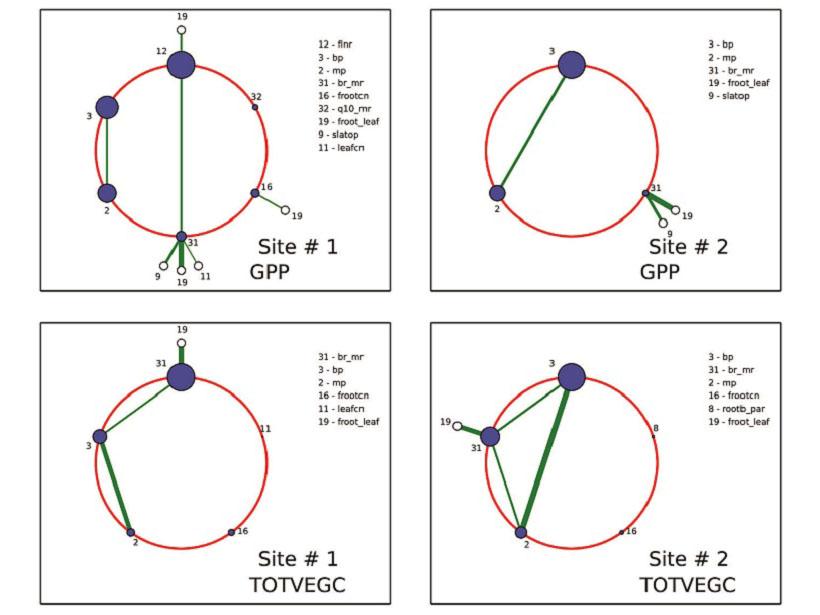Source: Journal of Advances in Modeling Earth Systems (JAMES)
Earth system models contain dozens if not hundreds of parameters that are not easily definable or accurately tunable over most of the Earth, meaning these models do not fulfill their true potential as tools for simulating or predicting weather and climate. Ricciuto et al. [2018] extend the mathematical technique called Polynomial Chaos (PC), a method to determine uncertainty in dynamical systems, with a new Bayesian compressive sensing (BCS) algorithm to applications at very high dimensions like those found in complex Earth system models. Interesting applications, such as sensitivity analysis, parameter optimization and distribution estimation are possible. With the help of PC-BCS, the sensitivity indices within models can be directly computed, and is demonstrated to be a more effective means of optimizing the land surface parameters of the Energy Exascale Earth System Model (E3SM).
Citation: Ricciuto, D., Sargsyan, K., & Thornton, P. [2018]. The impact of parametric uncertainties on biogeochemistry in the E3SM land model. Journal of Advances in Modeling Earth Systems, 10. https://doi.org/10.1002/2017MS000962
—Paul A. Dirmeyer, Editor, JAMES
Text © 2018. The authors. CC BY-NC-ND 3.0
Except where otherwise noted, images are subject to copyright. Any reuse without express permission from the copyright owner is prohibited.

